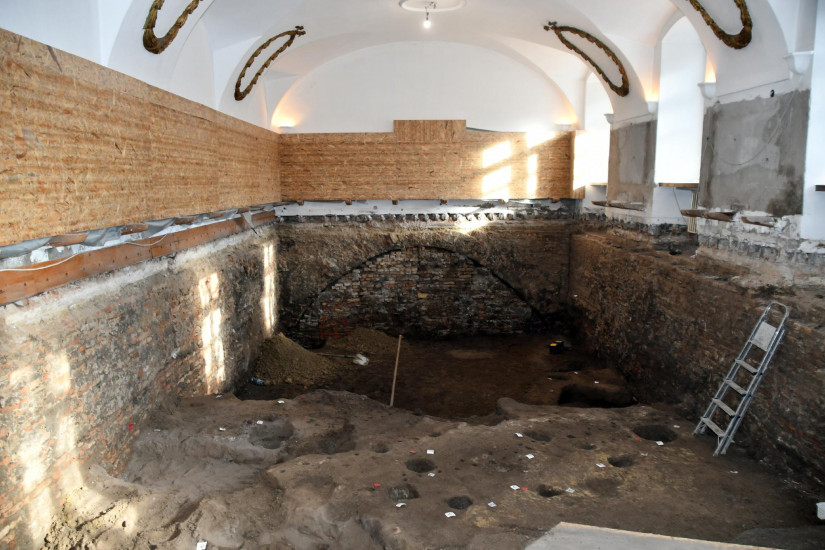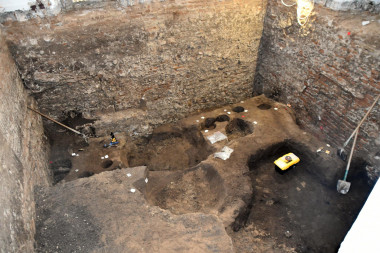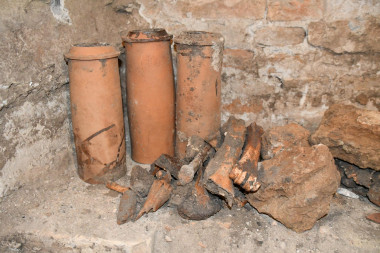Archeologists found the centre of medieval Kecskemét during the renovation of the Institute
Five-hundred-year-old coins, a residential house from the Árpád Era and the ground floor of a tower in the former centre of medieval Kecskemét were unearthed during the excavation prior to the renovation of the Kodály Institute, archaeologist András Kristóf Fazekas, employee of the József Katona Museum in Kecskemét told MTI.
The archaeologist said: the former owner of Kecskemét was the wife of King Sigismund. It is possible that the tower, built in the 15th century in today's Kéttemplom köz, can be connected to the toll-collectors of Queen Borbála. Archaeologists have now found the ground floor of this building under the Kodály Institute.

András Kristóf Fazekas pointed out that in the 1970s, archaeologist Piroska Biczó found a door and a significant amount of filling in an 80-centimeter-wide excavation ditch inside the tower, so she rightly thought she had discovered a cellar. During the current work however, archaeologists discovered three walled-up windows opposite the door. Thus, it is certain that the ground floor of the tower built in the 1400s, was discovered and not the basement.
The archaeologist recalled that the Franciscans received the area in the 1640s, where several presumably wooden buildings were built, but this complex of buildings burned down in 1678. The construction of the square-shaped baroque monastery, which still stands today, was started after the fire, digging into the city centre of medieval Kecskemét. During the present deepening of the Institute's rooms, this core between the foundation walls is being excavated.
Traces of the Árpádian Kecskemét were also discovered during the removal of the levels from the 1500s.
The archaeologist has long been looking for relics from the Árpád Era in the centre of Kecskemét. Although Piroska Biczó managed to excavate furnaces in the vicinity of the Church of the Friars in the 1970s, a significant residential house half-recessed in the ground was found, as well as additional pits and pile holes, from which ceramics from the Árpád Era dating back to the 1200s were clearly found.


According to András Fazekas, the wall section that "cuts" the Árpádian house is also a rarity, because at first they thought that it was only a baroque wall, but during the excavations it turned out that these wall sections were actually made of medieval stone which were later dismantled.
During the excavations, thousands of animal bone remains as well as significant quantities of ceramic fragments were unearthed, including notable imported objects.

It was also reported that the number of coins, which are roughly five hundred years old, is approaching thirty. The youngest coin dates from the reign of Franz Joseph, 1859; the oldest one originates from the time of King Sigismund, the end of the 1300s, the beginning of the 1400s.
Archaeologists are scheduled to dig nearly four metres deep and the work is expected to be completed in the spring of 2022.
András Kristóf Fazekas pointed out that the findings excavated at the Kodály Institute provide a lot of information for the history of medieval Kecskemét and the medieval topography of the city.



